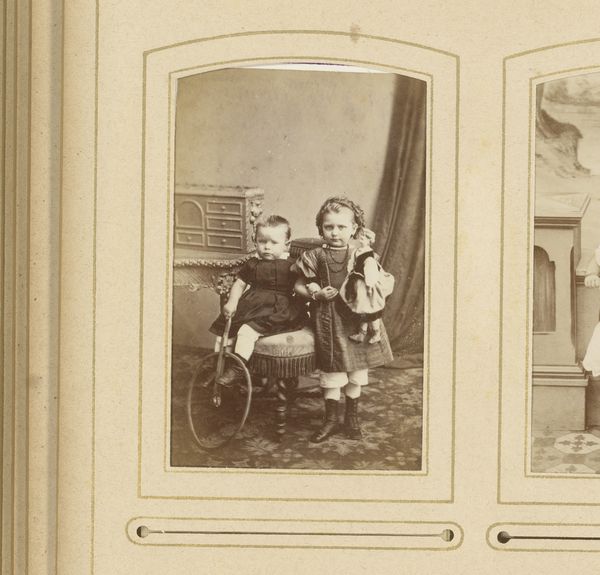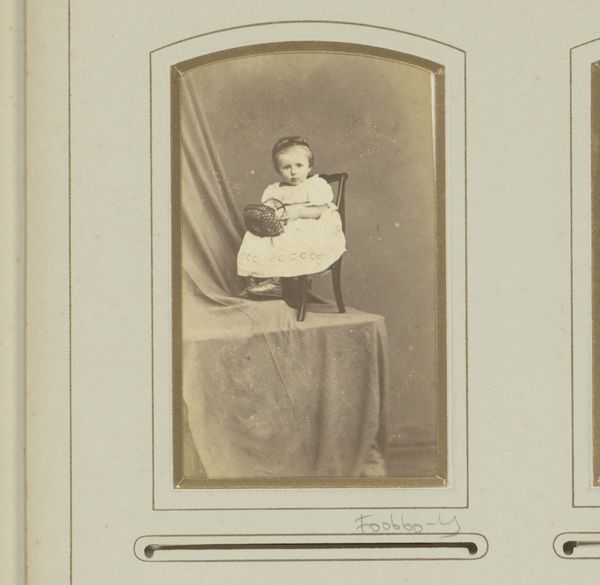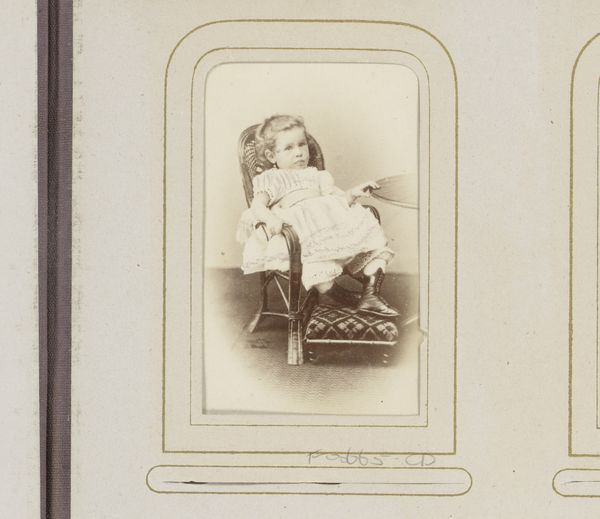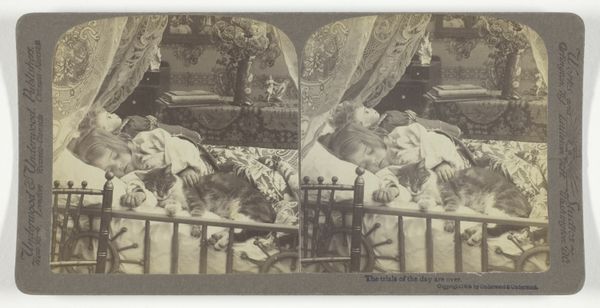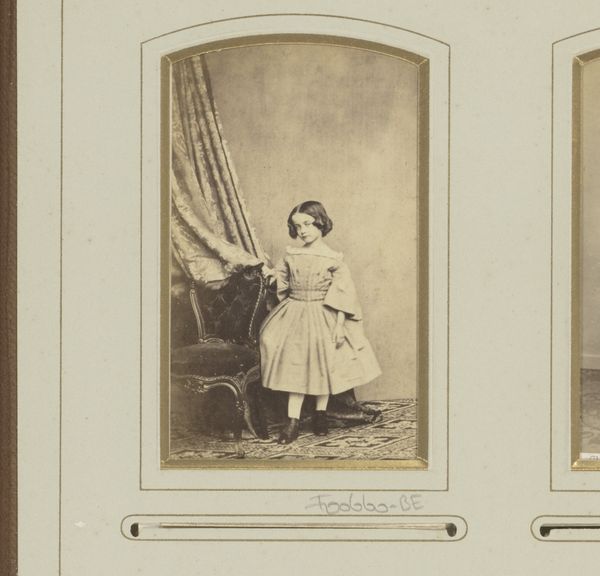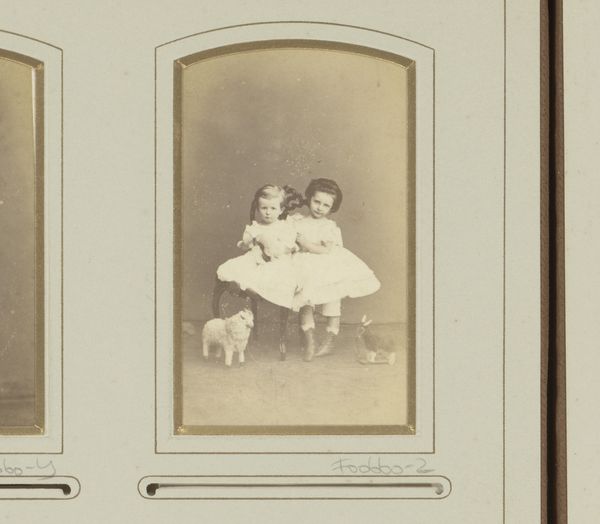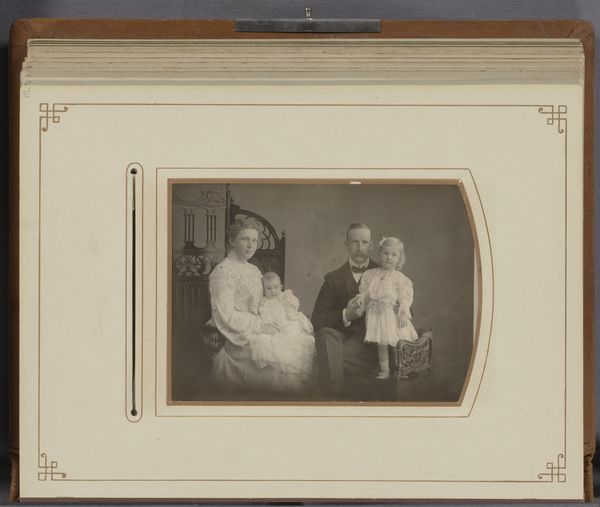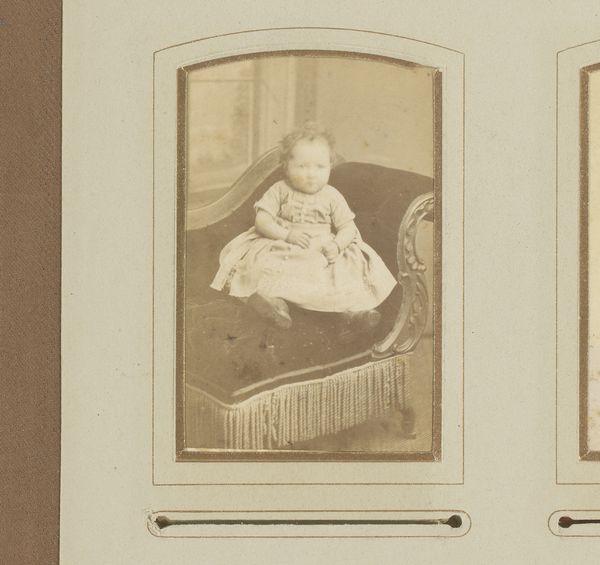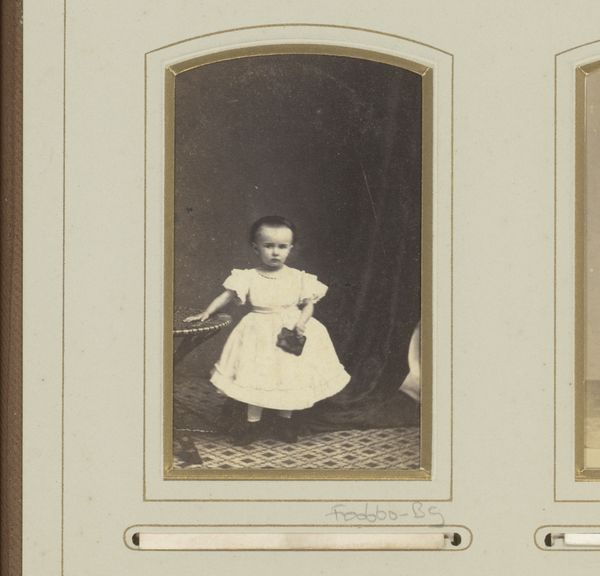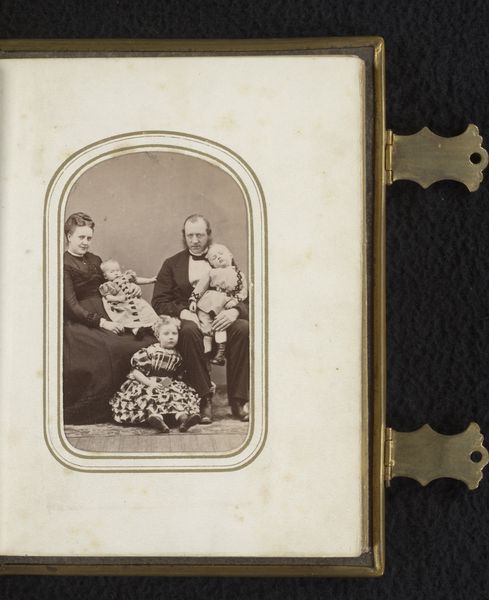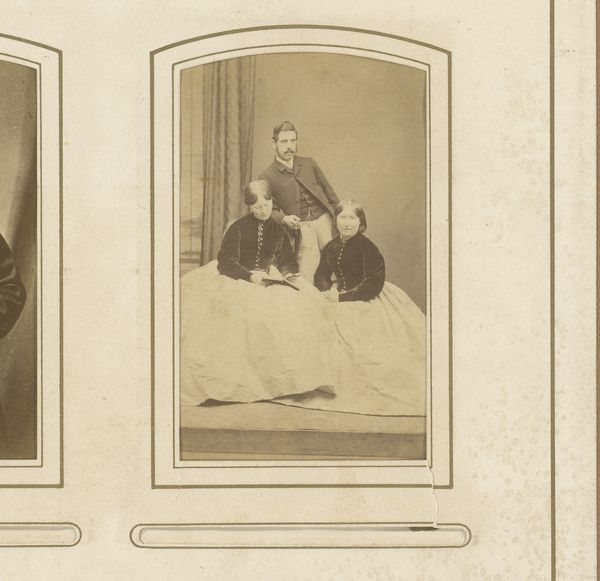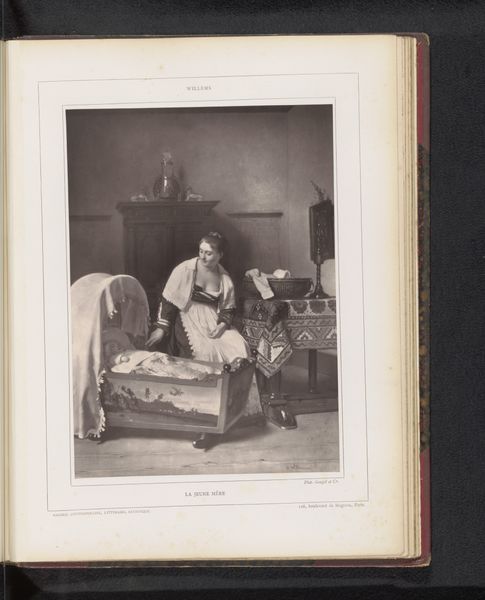
Portret van een peuter staand op een stoel en een hond liggend op een tafel c. 1880
0:00
0:00
daguerreotype, photography, gelatin-silver-print
#
portrait
#
still-life-photography
#
dog
#
daguerreotype
#
photography
#
historical photography
#
gelatin-silver-print
#
19th century
#
genre-painting
Dimensions: height 85 mm, width 53 mm
Copyright: Rijks Museum: Open Domain
Curator: Let's examine "Portret van een peuter staand op een stoel en een hond liggend op een tafel," created circa 1880 by P. Vlaanderen & C. van der Aa. The medium appears to be a gelatin silver print. Editor: It's a striking composition, quite melancholic. The stark contrasts in light and shadow and somewhat confined space impart a sense of somber introspection. Curator: Observe the photograph's inherent structure. The arrangement, with the child perched upon an upholstered chair and the dog reclining on a small table, constructs a careful balance. Editor: And this balance feels pointedly unnatural. Note the dynamic of power at play. The child is elevated, the dog passively compliant, arranged carefully for the photograph; reflecting society's norms and expectations around gender roles. Are we meant to consider issues of obedience and dominion? Curator: It might be overreaching to read deliberate commentary here. From a formal standpoint, one cannot ignore how the texture of the fabrics interacts with the sleek fur of the dog, creating tonal contrasts that drive the viewer's eye across the frame. The shapes create harmony. Editor: I believe it is essential to reflect on the context in which this image emerged, particularly in the Dutch culture of the 19th century. Who commissioned this piece? What were their values and what do we glean about the status they are portraying? This image might hint at the domestic life and gendered expectations that shaped children. Curator: Perhaps. But, by fixating on its symbolism alone, are we not losing the subtleties of texture and light that imbue the image with so much emotional resonance? We must analyze its aesthetic impact first. Editor: And by ignoring the complex web of societal influence are we dooming it to ahistorical neutrality? Art exists within context, so we need both to perceive its holistic nature. Curator: Well said, there is an undeniable magnetism stemming from how it reflects social forces and an era gone by. Editor: Exactly, acknowledging this complexity makes the piece both moving and truly meaningful.
Comments
No comments
Be the first to comment and join the conversation on the ultimate creative platform.
